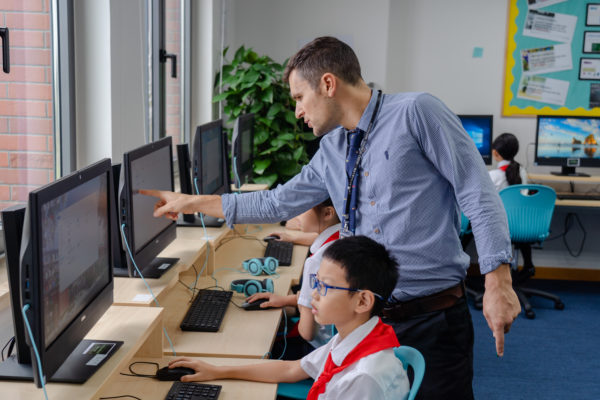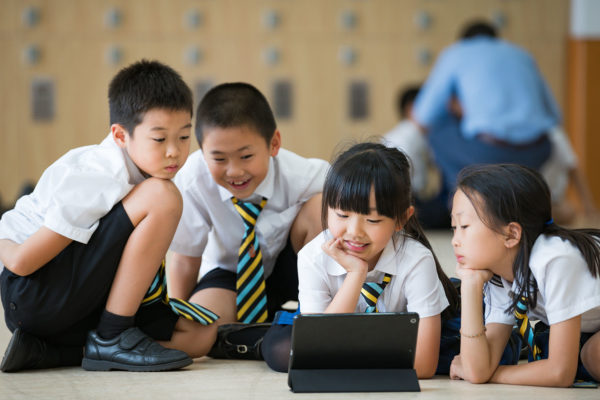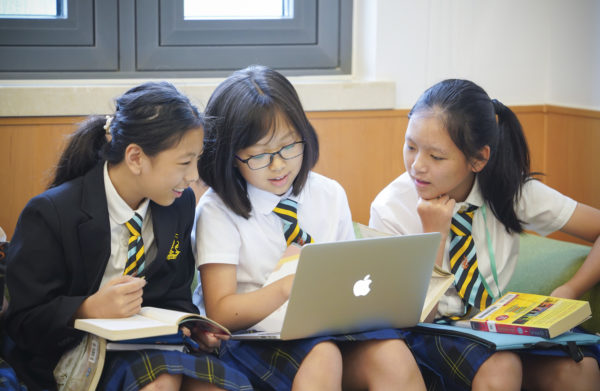
One of the core parts of the ICT curriculum at Hiba is the computer science element of the course. One third of the ICT curriculum is dedicated to computer programming, but why do we see programming as an essential skill for our pupils to learn? The benefits of a pupil gaining a firm grasp of programming principles have been proven by many studies, with research suggesting that learning such skills can increase the pupil’s problem solving and logical thinking abilities.
“I learned to programme… and I am still learning.”——Jack Dorsey, CEO of Twitter
There are benefits beyond logical thinking too; when you learn computer programming you learn how to check your work for details, how to apply logic and how to persist at any given task. Finally, you learn how to collaborate effectively, because much of the programming work done today is accomplished in teams.

Accordingly, these timeless skills and learning behaviours our pupils absorb will endure far longer than any specific programming language.
Encouragingly, the benefits of teaching coding and programming are being recognised in schools around the world.
In January 2012, the UK removed its old ICT syllabus and replaced it with a much more computer science-focused one, which is aimed at teaching all pupils the fundamentals of programming.
“In fifteen years we’ll be teaching programming just like reading and writing and wondering why we didn’t do it sooner.”——Mark Zuckerberg, CEO of Facebook
Fortunately, pupils at Hiba don’t have to wait fifteen years until their school starts teaching programming, we start teaching it from grade 3, as soon as pupils begin their ICT lessons.

We use a range of different apps and software to deliver a well-rounded computer science and programming regimen. Pupils start off using software such as Scratch and Scratch Junior to fit blocks or shapes of code together in order to move characters across the screen and make them interact with each other. Even at this stage, pupils are starting to learn concepts such as iteration, which we will return to year after year. By grade 4 and 5, pupils are using apps such as Kodu and are starting to write full programmes and create sophisticated games, which are fully designed, tested and polished by pupils themselves. “Don’t just buy a new video game — make one. Don’t just download the latest app — help design it. Don’t just play on your phone — programme it.”——Barak Obama, Former President of the USA In grade 6 we begin learning how to write using programming languages. Pupils undertake a unit on MSW logo, a very simple programming language developed by Microsoft in which a turtle moves across a screen and makes different shapes. In grade 7 and 8, pupils will continue learning Python as well as other popular web designing programming languages such as HTML, CSS and Java Script.

We also study Python for the first time. Python is the coding language which pupils will master if they decide to take the iGCSE in computer science in grade 9 and 10. “I learned to programme… and it changed my life forever.”_Susan Wojcicki, CEO of YouTube By the end of their time at Hiba, all pupils will have had the opportunity to learn a range of different programming languages; to explore and experience the patience, persistence and hard work it takes to learn to programme successfully. Some pupils will continue into the field of programming, web design and data science, and will use put the skills they learn here at Hiba to good use in their future careers. Others will not programme computers in their daily lives, but research shows that the skills they have picked up in their computer science classes will help them to succeed in a range of other technical and creative industries. Here’s a list of some of the different applications and software that can help pupils in their journey to become young programmers. 1. Scratch Jr

Age: grade 1 and 2
Cost: free
Devices: iPad and android
Scratch JR is a drag-and-drop programming environment based on the popular, powerful Scratch system. Users choose characters and backgrounds and then drag and drop pieces of a programming script. Each piece causes the chosen character to perform certain actions – jumping, moving forward and backward, disappearing and reappearing.
2. Scratch

https://scratch.mit.edu/ Age: grade 3, 4 and 5 Cost: free Devices: Windows and Mac computers Scratch is a free, downloadable application that lets users combine graphics, photos, music, and sound to create simple interactive animations, games, and slideshows. Users create scripts by dragging and dropping graphical blocks that snap together like puzzle pieces. 3. Hopscotch

Age: grade 3,4 and 5 Cost: free (or paid subscription) Devices: iPad and android Kids create games and animations with Hopscotch by dragging and dropping commands and instructions into a script. Kids choose characters from colourful monsters, animals or their own images with a subscription. 4Move the Turtle

Age: grade 4 and 5 Cost: free Devices: iPad and android The user chooses instructions for moving the turtle around the screen. This can include using graphics; colour, sound and more. It is possible for the user to create their own programmes from scratch and they can view examples of pre-written programmes. 5. Kodu

Age: grade 4 and above Cost: free Devices: Windows store (PC only) This powerful drag-and-drop user interface allows pupils to design their own game environment and then programme their characters to move and interact with each other. Games can be made increasingly sophisticated by adding variables and different levels. 6. Codecademy

http://www.codecademy.com/ Age: grade 6 and above Cost: free Devices: iPad and android and website Designed to introduce new users to the world of written programming, Code academy provides interactive lessons on JavaScript, HTML, and CSS. 7. Code.org

Probably the best resource for pupils and parents is the excellent https://code.org/. this website is a platform and portal for an array of coding games, programmes and activities. They organise their annual “Hour of Code” during which millions of pupils try coding for the first time and they have lots of themed activities available for all ages.